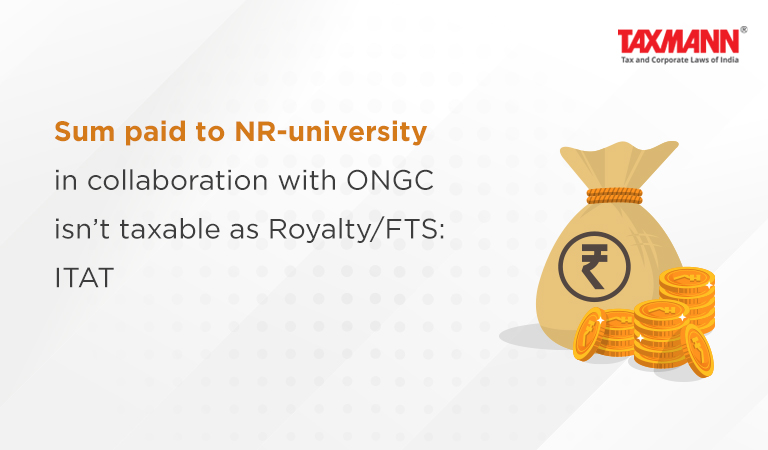Sum paid to NR-university in collaboration with ONGC isn’t taxable as Royalty/FTS: ITAT
- Blog|News|International Tax|
- 2 Min Read
- By Taxmann
- |
- Last Updated on 24 January, 2023

Case Details: Oil and Natural Gas Corporation Ltd. v. ITO (International Taxation) - [2023] 146 taxmann.com 137 (Ahmedabad-Trib.)
Judiciary and Counsel Details
-
- Mahavir Prasad, Judicial Member & Waseem Ahmed, Accountant Member
- Mohd. Farid, A.R for the Applicant.
- Mohd. Usman, CIT D.R. & Purushottam Kumar, Sr. D.R. for the Respondent.
Facts of the Case
The assessee-Oil and Natural Gas Corporation (ONGC) was engaged in the extraction and production of mineral oil and natural gas. It had entered into an agreement with the non-resident University of Texas at Austin, USA to carry out the research programme.
The Assessing Officer (AO) observed that the payments made to University were in the nature of royalties/fees for technical services. Therefore, he directed the assessee to deduct the tax at the rate of 10 percent (excluding education cess/surcharge) on gross payments to be made to the University.
Assessee approached CIT(A) which confirmed the order of AO. Aggrieved-assessee filed the instant appeal before the Tribunal.
ITAT Held
The Tribunal ruled that for tax liability to apply, the technical knowledge, experience, skill, know-how, or process used by the service provider to render technical services must also be made available to the recipient of the services so that the recipient can render similar technical services.
Unless the service provider makes available his technical knowledge, experience, skill, know-how or process to the recipient of the technical service, in view of Article 12 of the DTAA, the liability to tax is not attracted.
The fact that a business is dependent on technical services does not mean that the business is using the technology used by the service provider to provide those services.
In the instant case, the agreement defining the scope of work showed that there was neither any patent/copyright used by the assessee against which the royalty was paid nor there was any technical know-how that was made available to the assessee. Thus in such facts and circumstances, there was no liability on the assessee to deduct the tax in pursuance of Article 12.
List of Cases Referred to
-
- Oil & Natural Gas Corporation Ltd. v. CIT [2015] 59 taxmann.com 1/233 Taxman 495/376 ITR 306 (SC) (para 6.3).
Disclaimer: The content/information published on the website is only for general information of the user and shall not be construed as legal advice. While the Taxmann has exercised reasonable efforts to ensure the veracity of information/content published, Taxmann shall be under no liability in any manner whatsoever for incorrect information, if any.

Taxmann Publications has a dedicated in-house Research & Editorial Team. This team consists of a team of Chartered Accountants, Company Secretaries, and Lawyers. This team works under the guidance and supervision of editor-in-chief Mr Rakesh Bhargava.
The Research and Editorial Team is responsible for developing reliable and accurate content for the readers. The team follows the six-sigma approach to achieve the benchmark of zero error in its publications and research platforms. The team ensures that the following publication guidelines are thoroughly followed while developing the content:
- The statutory material is obtained only from the authorized and reliable sources
- All the latest developments in the judicial and legislative fields are covered
- Prepare the analytical write-ups on current, controversial, and important issues to help the readers to understand the concept and its implications
- Every content published by Taxmann is complete, accurate and lucid
- All evidence-based statements are supported with proper reference to Section, Circular No., Notification No. or citations
- The golden rules of grammar, style and consistency are thoroughly followed
- Font and size that’s easy to read and remain consistent across all imprint and digital publications are applied





